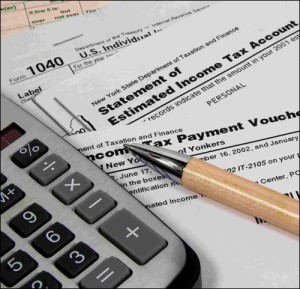By Bonnie Lee
For 2018 a complicated tax reform bill, the “Tax Cuts and Jobs Act” took effect, promising to help the middle and lower classes enjoy bigger take-home pay and lower tax liabilities. Tax rates dropped, and the standard deduction doubled. This was major stuff. The biggest tax reform act since 1986.
So how is it shaking out? The IRS reported on February 28, 2019, that the average refund at this point in the filing season is now up 1.3% over last year based on 47.7 million individual returns processed thus far in 2019, compared with 49.2 million returns processed in 2018. Not a significant leap but still, it’s something positive.
On the other hand, there have been a lot of complaints. For many the new tax law isn’t working out as anticipated and many taxpayers are experiencing much smaller refunds and they wonder why. People are confused and angry.
As with all tax reform, the new bill involved a lot of giving with one hand and taking with the other. Explained below are various reasons that your refund may be much lower than expected:
- Compare your 2018 income and withholdings against your 2017 income tax return. For some the reason is simply that income has increased but insufficient tax was withheld or paid in the form of estimates to cover the additional liability.
- The standard deduction has essentially doubled. However, personal exemptions have been removed ($4,050 for each person listed on the tax return), making the benefit of the increased standard deduction negligible or completely insignificant or, worse yet, throwing you into a higher liability.
- For those who itemize with totals above the standard deduction for their filing status, it doesn’t matter to them that the standard deduction has doubled. But it definitely hurts to lose the personal exemption. For those in the middle class, this could be an increase in tax liability of nearly $1,000 or in some cases substantially more.
- Itemized deductions have also been trimmed. No longer can you deduct employee business expenses, tax preparation software or tax preparation fees, portfolio management advisory fees, safe deposit rental fees among other miscellaneous itemized deductions. Also, the amount of taxes you can deduct in 2018 (real estate taxes, state income taxes, DMV fees, etc.) has been capped at $10,000. If you are a high earner, you likely have a large state tax liability. Say bye bye to any deduction greater than $10,000.
- Even though tax rates decreased, your refund may be less because you elected to take home a larger net pay. Your withholding was adjusted downward so you could enjoy a bigger paycheck throughout the year. This action will reduce your refund or put you in the position of owing Uncle Sam.
- There may have been other taxable events this year that are out of the norm. Perhaps you sold investments or collected unemployment or began receiving Social Security benefits. Or you may have experienced other taxable transactions that increased your liability.
- Here’s a strange one: your income decreased but it caused a reduction in the Earned Income Credit and therefore a lower refund.
These are the main causes. The best idea is to review your 2017 tax return and compare it to your 2018 data to see if you can find any other reason(s) why your refund is lower. Your tax pro can assist you with this process.





Be First to Comment